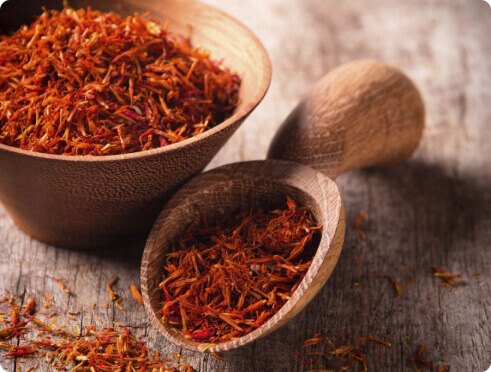Saffron is a spice that perfectly emphasizes the taste of pastries, drinks and main dishes. It is added to desserts, Mediterranean dishes, drinks. But at the same time, saffron is the most expensive spice in the world. Which, unfortunately, is often forged. Today we will tell you how to avoid counterfeiting and buy natural saffron. We have prepared tests and tips that will help you not to make mistakes.
How to forge saffron?
Counterfeiting is often industrial in scale. Ground spice is mixed with corn husk: it helps to get more product at the exit. The packaging of this spice often does not indicate that it is a mixture.
In the worst case, saffron is not just diluted, but given another raw material – the same corn husk, painted crimson. And yet – deceive customers, pretending to be saffron turmeric or other, cheaper spices. Without experience, it is very easy to make mistakes.
What is he – a real saffron?
Natural spice – dark red, with a delicate floral aroma. And also – with a pleasant taste. The smell of plastic, excessive bitterness, metallic taste – signs of poor quality product.

Saffron should be bought only in the stigmas, in any case not ground. After all, it is the ground one that is most often diluted and forged. Stigmas are the upper part (receptacle), which has a bright color. The stigmas have a tubular shape that opens upwards, with a jagged upper edge.
The finished spice often has the form of tangled balls of stigmas 3-5 cm long, single or three on a light yellow base. The light lower part, which does not contain dye, should be no more than 1 cm. Dry tubes are flattened, visually similar to a thread up to 1-2 mm.
Saffron is most often sold in transparent airtight containers, but usually the characteristic bitter-spicy odor is felt through any package.
We talked about first-class saffron. Also in stores you can find:
- The second type of saffron is fragments and small parts of stigmas. This spice is inferior to first-class spices not only less attractive appearance, but also partial loss of essential oil.
- The third variety is ground saffron. All small parts are used for grinding, even yellow unpainted legs and dust.
Please note: counterfeit saffron is often mistaken for a spice called La Mancha. Instead of natural spices you can get cotton threads, cut plastic, cut dry petals of other plants – poppies, pomegranates.
Ground saffron can be sold moist for weight gain, diluted with starch, chemical dyes.
How to check saffron: tests
If it so happened that you bought saffron, the quality of which is not sure, you can check the spice at home.
Test №1
Take a few strands of saffron and soak them in hot (not boiling) water for 5-20 minutes. If the saffron is counterfeit, a red dye will come out and the threads will fall apart. The natural spice will remain intact, slowly turning the water yellow.
Test №2
You can also check the naturalness of the spice to taste. Fake saffron test water is either completely tasteless or will have a bitter metallic taste. Real saffron will have a strong floral aroma, and the test liquid will have a floral-earthy taste.
Unfortunately, these methods are only suitable for whole saffron: it is impossible to check the ground after purchase.
How to buy real saffron: tips in brief
- Contact reputable sellers you are confident in.
- Don’t buy ground saffron. It is forged most often.
- Pay attention to color. Real saffron – dark red, contains almost no orange receivers.
- Pay attention to the thickness of the stigmas – they must be very fragile.
- This product has a pronounced specific spicy smell.
- Turmeric and saffron are not the same thing. Sometimes turmeric is offered instead of saffron in ground form, because it has a similar color. However, the taste, aroma and properties of these spices are completely different.
- In no case do not buy saffron from sellers on the street, in natural markets. This is often done with the desire to save, but natural spice can not be too cheap.
